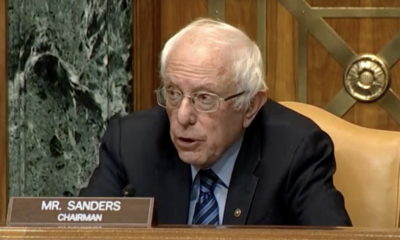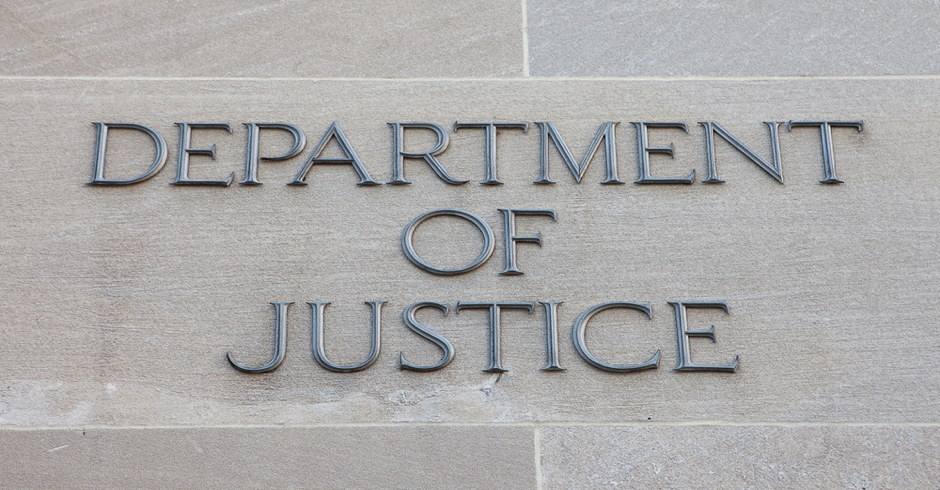News
New GOP Strategy: Skyrocket the Cost of Health Insurance and Prescription Drugs

House and Senate Republicans and the Trump campaign are looking to repeal parts of President Joe Biden’s highly-successful Inflation Reduction Act (IRA) and President Barack Obama’s highly-successful Affordable Care Act (ACA), with a sharp focus on the provisions that protect access to health insurance and have lowered health care costs and prescription drug costs for millions of Americans – and will do so even more next year.
Republicans this week have been discussing plans to repeal the protections that require private insurance companies to provide the same coverage, and at the same cost, to people with pre-existing conditions as it does for those without them. They are also looking to repeal the hard-fought right the federal government now has to negotiate prescription drug prices for Medicare.
The Affordable Care Act, also known as ObamaCare, turned 14 this year. Some Americans, especially those who came of age after it was enacted, may not be aware that before the ACA, insurance companies could and often did deny coverage based on “pre-existing conditions.” ObamaCare made that practice illegal.
“GOP healthcare plans, per the last 24 hours,” reports DC journalist Todd Zwillich, include “repeal pre-existing conditions protections in private insurance,” and “repeal Medicare’s negotiating power for Rx drugs.”
U.S. Rep. Buddy Carter (R-GA) called the provisions in the Inflation Reduction Act that allow the federal government to negotiate prices for Medicare drugs, “the worst legislation I’ve ever witnessed in 10 years in Congress and 10 years in the state legislature.” He said he “absolutely” wants to repeal them, according to Axios. “No congressional Republicans asked by Axios argued for keeping the IRA drug pricing talks.”
READ MORE: ‘Huge Problem for Trump’: Joe Rogan Gushes Over Kamala Harris
“Sen. Thom Tillis (R-N.C.) said he ‘100%’ wants to repeal the negotiation provisions, while other drug pricing sections of the law would need to be evaluated based on whether they have ‘a positive impact on business.'”
Axios also reports that “multiple high-ranking Republicans told Axios they want to repeal the Inflation Reduction Act’s Medicare drug price negotiations next year if they prevail in the elections.”
“This isn’t some wild accusation or scare tactic,” remarked Secretary of Transportation Pete Buttigieg. “Republicans are admitting they would side with Big Pharma and gut the Biden-Harris law that lets Medicare negotiate drug prices, if they win. They are literally, openly, for higher drug prices.”
During last week’s presidential debate Donald Trump admitted that after years of vowing to “repeal and replace” Obamacare and after numerous promises he would release his healthcare plan soon, often in “two weeks,” all he actually has are the “concepts of a plan.”
Trump, when asked if he still does not have a healthcare plan: “I have concepts of a plan. I’m not president right now, but if we come up with something, I would only change it if we come up with something…You’ll be hearing about it in the not-so-distant future.” pic.twitter.com/j2GAojEeTx
— Republican Voters Against Trump (@AccountableGOP) September 11, 2024
Trump’s running mate, U.S. Senator JD Vance (R-OH) on Sunday revealed what some of those concepts are.
JD Vance on what Trump’s healthcare plan actually is: “Deregulating the insurance markets so that people can choose a plan that actually makes sense for them.” pic.twitter.com/gYhFBubovT
— Aaron Rupar (@atrupar) September 15, 2024
Journalist Brian Beutler highlighted Vance’s remarks on Sunday’s “Meet the Press,” where the GOP vice-presidential nominee said, “we want to make sure everybody is covered. But the best way to do that is to actually promote some more choice in our health care system and not have a one-size-fits-all approach that puts a lot of people into the same insurance pools, into the same risk pools, that actually makes it harder for people to make the right choices for their families.”
Pointing to Vance’s interview (above), Beutler writes: “When Vance here says he wants to put the healthy and sick in different risk pools he’s saying he wants to make pre-existing conditions protections impossible. His claim to want to maintain them is a lie.”
READ MORE: ‘Megaphone for Hate’: Vance’s Slam of Dem ‘Rhetoric’ Backfires in ‘Streisand Effect’
“One of the ‘concepts’ of the Trump-Vance plan is to screw over people with pre-existing conditions, specifically,” he adds, pointing to his “Off Message” Substack. “Step one of the plan is to lie about it—say it covers pre-existing conditions. Step two is to kick out the regulatory tentpoles that make covering pre-existing conditions possible.”
Journalist Heather Parton Digby writes that Vance’s plan “would take us back to the time when I was denied health insurance because I had periodontal disease. (I’m not kidding.) When I finally found a health insurer who would cover me ( I was otherwise completely healthy) it cost well over a thousand dollars a month and it had a gigantic deductible. That’s the market we were living in if we didn’t have employer or government insurance. Vance wants to take us back to that and people really should know that.”
If Republicans are successful in eliminating protections, insurance companies could be able to determine what a pre-existing condition is, and whether they want to deny a policy to any individual who has a pre-existing condition, or to deny coverage for that condition and any related issues.
Up to 50 percent of all non-elderly Americans – up to 129 million Americans – have a pre-existing condition, according to the U.S. Dept. of Health and Human Services’s Centers for Medicare & Medicaid Services.
“A medical illness or injury that you have before you start a new health care plan may be considered a pre-existing condition. Conditions like diabetes, chronic obstructive pulmonary disease (COPD), cancer, and sleep apnea, may be examples of pre-existing health conditions. They tend to be chronic or long-term,” according to Cigna, a healthcare and insurance company. “The ACA made it illegal for health insurance companies to deny you medical coverage or raise rates due to a pre-existing condition.”
The list of what could be considered a pre-existing condition is long, but after the coronavirus pandemic, it has grown longer and encompasses more Americans: An estimated 43 million Americans have had long COVID, and about 17 million Americans currently do still.
Near the end of the Trump administration, in 2020, KFF, formerly the Kaiser Family Foundation published a report: “Mental Illnesses May Soon Be the Most Common Pre-Existing Conditions.”
Also in 2020, House Democrats published a massive 197-page report: “Shortchanged: How the Trump Administration’s Expansion of Junk Short-Term Health Insurance Plans is Putting Americans at Risk.” It concluded these plans “present a significant threat to the health and financial well-being of American families. STLDI plans include limited protection for both catastrophic medical costs and routine medical care, and it is unclear what kind of value consumers are getting for their premium dollars, other than a false sense of security.”
Democratic former U.S. Congressman and Obama State Dept. official Tom Malinowski weighed in earlier this week:
This kept promise was part of the Inflation Reduction Act, which every GOP member of Congress voted against, and which they still denounce. https://t.co/K9WmeNx33v
— Tom Malinowski (@Malinowski) September 16, 2024
Watch the videos above or at this link.
READ MORE: ‘Remigration’: Trump Continues Attacks on Immigrants With New Vow of Forced Deportations
Enjoy this piece?
… then let us make a small request. The New Civil Rights Movement depends on readers like you to meet our ongoing expenses and continue producing quality progressive journalism. Three Silicon Valley giants consume 70 percent of all online advertising dollars, so we need your help to continue doing what we do.
NCRM is independent. You won’t find mainstream media bias here. From unflinching coverage of religious extremism, to spotlighting efforts to roll back our rights, NCRM continues to speak truth to power. America needs independent voices like NCRM to be sure no one is forgotten.
Every reader contribution, whatever the amount, makes a tremendous difference. Help ensure NCRM remains independent long into the future. Support progressive journalism with a one-time contribution to NCRM, or click here to become a subscriber. Thank you. Click here to donate by check.
 |




























